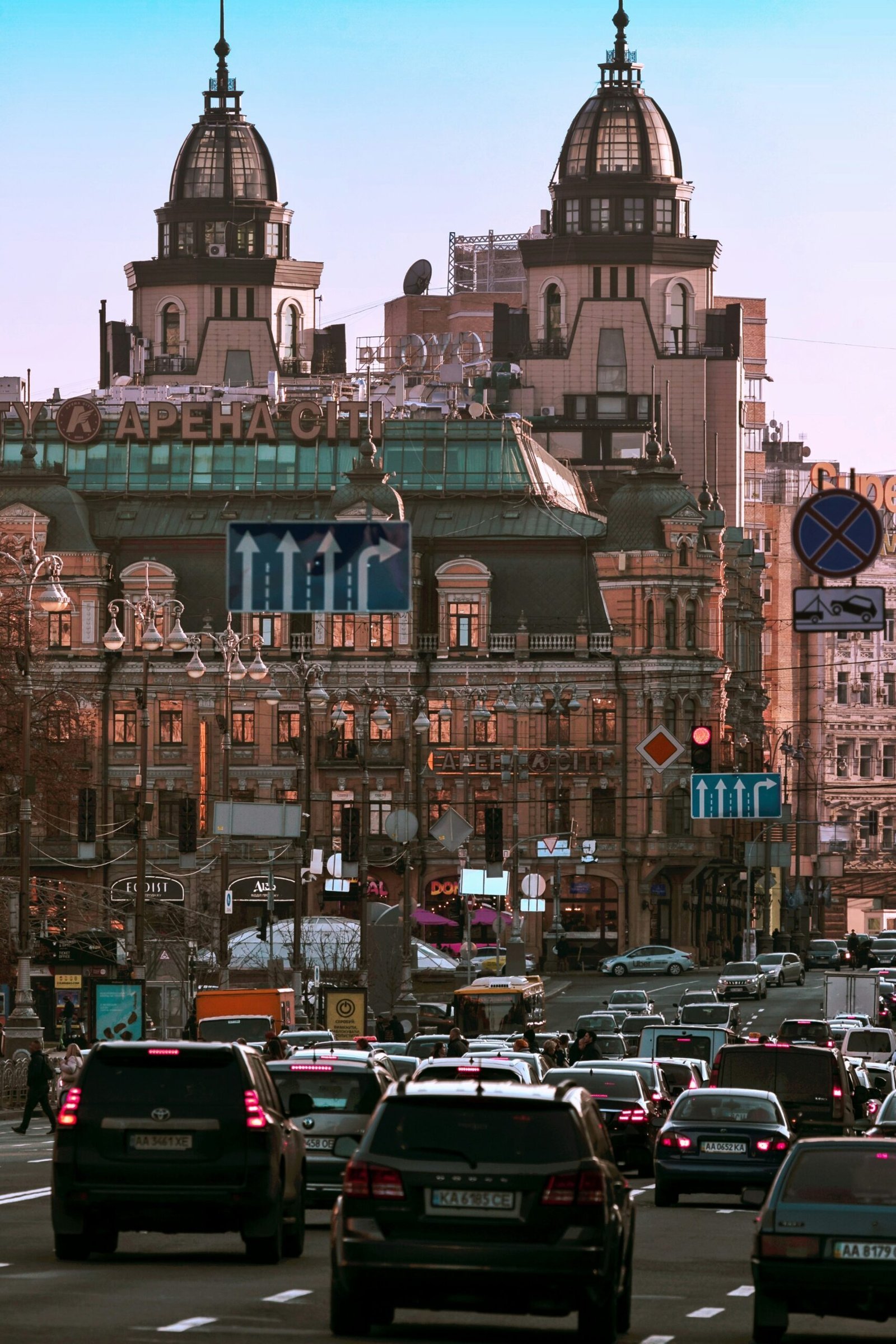
Introduction: Background of the Conflict
The conflict between Ukraine and Russia has deep roots, with tensions reaching a critical point in 2014 when Russia annexed Crimea. This unilateral move by Russia was widely condemned by the international community and marked the beginning of a prolonged period of instability and violence in the region. The annexation was followed by pro-Russian unrest in Eastern Ukraine, particularly in the Donetsk and Luhansk regions, where separatist movements emerged, leading to a full-scale war.
Key events that have shaped the current situation include the 2014 Ukrainian revolution, which ousted President Viktor Yanukovych, and the subsequent Russian military intervention. The Minsk agreements in 2015 were an attempt to bring peace but failed to resolve the underlying issues. Over the years, sporadic fighting continued despite numerous ceasefires, resulting in thousands of casualties and significant displacement of civilians.
The recent escalation in 2022 has seen a marked increase in hostilities, with Russia launching a large-scale invasion of Ukraine. This invasion has brought widespread destruction and has been met with strong resistance from Ukrainian forces. The international community has responded with severe economic sanctions against Russia and substantial military and humanitarian aid to Ukraine.
The current conflict is not merely a territorial dispute but a clash of political ideologies and geopolitical interests. It has significant implications for global security and international law, making it a focal point of global diplomacy and media coverage. Understanding the historical context of the Russian invasion of Ukraine is crucial for comprehending the complexities of the current situation.
Recent Escalations and Key Events
The ongoing conflict between Ukraine and Russia has seen a series of significant escalations and key events in recent months. These developments have further complicated the already volatile situation, drawing global attention and eliciting varied international reactions.
One of the most notable events was the substantial increase in military activity along the Russia-Ukraine border. Satellite imagery and intelligence reports have confirmed the presence of thousands of Russian troops, armored vehicles, and artillery units, indicating potential preparation for large-scale operations. This buildup has raised alarms within the international community, with NATO and the European Union expressing deep concerns over the possibility of a full-scale invasion.
In addition to military movements, there have been critical political decisions that have further strained relations. In early September, the Russian government officially recognized the independence of the self-declared Donetsk and Luhansk People’s Republics in Eastern Ukraine. This move was met with swift condemnation from Ukraine and its allies, who view it as a violation of Ukraine’s sovereignty and territorial integrity. The Ukrainian government responded by mobilizing its own military forces and calling for additional support from Western nations.
International reactions have been varied but largely unified in their opposition to Russian aggression. The United States and European Union have imposed a series of economic sanctions targeting key sectors of the Russian economy, including energy, finance, and technology. These sanctions aim to pressure Russia into de-escalating the conflict and returning to diplomatic negotiations. Furthermore, several NATO member states have increased their military presence in Eastern Europe as a deterrent, showcasing a commitment to collective defense under the alliance’s treaty obligations.
Protests have also erupted in multiple cities, both within Ukraine and internationally, as citizens voice their opposition to the war. Images of demonstrators holding Ukrainian flags and anti-war placards have become a common sight, symbolizing the widespread call for peace and stability in the region.
These recent escalations and key events underscore the gravity of the situation, emphasizing the urgent need for diplomatic solutions to prevent further bloodshed and maintain regional stability.
Humanitarian Impact and Civilian Life
The ongoing conflict between Ukraine and Russia has had profound effects on civilian life, leading to widespread displacement and a significant humanitarian crisis. According to recent United Nations reports, millions of Ukrainians have been forced to flee their homes, seeking refuge in neighboring countries or safer regions within Ukraine. These displaced individuals face numerous challenges, from finding shelter and securing food to accessing medical care and education.
Casualties have been another tragic consequence of the war. The Office of the United Nations High Commissioner for Human Rights (OHCHR) has documented thousands of civilian deaths and injuries since the start of the conflict. Many of these casualties are due to indiscriminate shelling and airstrikes in densely populated areas, underscoring the severe risks faced by those who remain in conflict zones.
Humanitarian aid efforts have been mobilized to address these urgent needs. International organizations such as the Red Cross, Doctors Without Borders, and various United Nations agencies are actively providing food, medical supplies, and other essential assistance. However, the scale of the crisis often overwhelms these efforts, leaving gaps in aid distribution and support.
Personal stories from those affected highlight the dire realities of the war. Maria, a mother of two from Donetsk, shared, “We had to leave everything behind. Our home, our memories, all gone. Now, we live in a temporary shelter, not knowing what the future holds.” Such accounts bring to light the profound emotional and psychological toll the conflict has on ordinary people.
The situation in Russia also reflects the conflict’s impact on civilian life. Families of soldiers face uncertainty and grief, and economic sanctions have led to increased hardships for many Russians. Despite these challenges, there are also stories of solidarity and resilience, as communities come together to support one another in these difficult times.
International Response and Diplomacy
The international community has been closely monitoring the ongoing Russian invasion of Ukraine, leading to a multifaceted response from major global powers and international organizations. One of the most significant reactions has been from the United Nations, which has held numerous emergency sessions to discuss the conflict’s implications on global peace and security. The UN General Assembly overwhelmingly condemned the invasion, calling for an immediate ceasefire and the withdrawal of Russian troops from Ukrainian territory.
In addition to the UN’s actions, NATO has played a critical role in supporting Ukraine. While NATO has not deployed troops directly into the conflict, it has significantly increased its military presence in Eastern Europe to deter further aggression. Member states have also provided substantial military aid to Ukraine, including advanced weaponry, intelligence sharing, and logistical support. The alliance’s unified stance underscores the broader geopolitical ramifications of the war.
The European Union has also taken a firm stance against the invasion, implementing a series of economic sanctions targeting key sectors of the Russian economy, including finance, energy, and defense. These sanctions aim to pressure Russia into de-escalating the conflict and returning to diplomatic negotiations. The EU has also provided humanitarian aid to Ukraine, supporting displaced populations and addressing the war’s social and economic impacts.
Beyond Europe, the United States has been a vocal critic of Russia’s actions, leading efforts to isolate Russia on the global stage. The U.S. has imposed stringent sanctions on Russian oligarchs, government officials, and enterprises, alongside providing substantial military and economic assistance to Ukraine. Diplomatic efforts by the U.S. have included rallying allies and partners to form a cohesive response against the invasion.
China’s response has been more measured, calling for restraint from both sides while emphasizing the importance of sovereignty and territorial integrity. Beijing has advocated for dialogue and negotiation to resolve the conflict but has refrained from directly criticizing Russia, reflecting its complex geopolitical interests.
Diplomatic efforts to de-escalate the situation have seen mixed results. Various peace talks, mediated by countries such as Turkey and France, have aimed to establish ceasefires and create humanitarian corridors. However, these initiatives have often been hampered by continued hostilities and mutual distrust. The international community remains engaged in seeking a resolution, recognizing that a sustainable peace requires a balanced approach addressing both immediate and long-term issues arising from the war.
Economic Consequences
The ongoing conflict between Ukraine and Russia has precipitated severe economic ramifications for both nations, as well as reverberating effects on the global economy. The imposition of international sanctions on Russia has significantly disrupted its trade relations. Key sectors such as energy, finance, and technology have faced stringent restrictions, leading to reduced foreign investment and a sharp decline in economic growth. The Russian ruble has also suffered, with devaluation affecting the purchasing power and overall economic stability.
Ukraine, on the other hand, has seen substantial infrastructural damage and disruption in its industrial base, particularly in regions heavily contested during the war. The agricultural sector, a critical component of Ukraine’s economy, has faced logistical challenges, reducing export capacities and creating food security concerns both domestically and internationally. The economic strain is further exacerbated by the displacement of millions of people, leading to increased public spending on humanitarian aid and social services.
The global economic landscape has not remained unscathed. Energy markets have experienced volatility, with Europe seeking alternative energy sources to decrease dependency on Russian oil and gas. This shift has led to increased energy prices and supply chain disruptions. Additionally, global trade has been affected by the closure of key transportation routes and heightened geopolitical tensions, creating uncertainty and slowing economic recovery from the COVID-19 pandemic.
Moreover, the financial sector has been impacted, with global markets reacting to the instability and uncertainty caused by the war. The sanctions against Russia have led to adjustments in international banking and finance, with countries re-evaluating their exposure to Russian assets and seeking safer investment avenues. These economic consequences underline the extensive and far-reaching impact of the Ukrainian-Russian conflict, not only on the involved nations but on the global economic system as a whole.
Military Strategies and Capabilities
The ongoing conflict between Ukraine and Russia has exhibited a range of military strategies and capabilities from both sides. Understanding these elements is critical for analyzing the progression of the war. Russia, with its extensive military resources, has employed a combination of traditional and modern warfare tactics. This includes the use of advanced missile systems, cyber warfare, and strategic airstrikes aimed at crippling Ukraine’s infrastructure and command centers.
On the ground, Russia has mobilized a substantial number of troops along the border, utilizing armored divisions and artillery units to establish control over key regions. The deployment of sophisticated technology such as drones and electronic warfare units has also been pivotal in gathering intelligence and disrupting Ukrainian communications. These strategies have allowed Russia to maintain a significant tactical advantage in certain areas, although Ukrainian resistance has remained resilient.
Ukraine, on the other hand, has focused on leveraging its defensive capabilities and asymmetric warfare tactics. Despite being outmatched in terms of sheer military strength, Ukrainian forces have demonstrated effective use of guerrilla tactics, leveraging their knowledge of the local terrain to stage ambushes and disrupt supply lines. Additionally, Ukraine has received substantial military aid and training from Western allies, including advanced anti-tank and anti-aircraft systems, which have been crucial in countering Russian advances.
The strategic objectives of both parties reveal their broader intentions. Russia seeks to consolidate its control over disputed territories and exert influence over Ukraine’s political landscape. Conversely, Ukraine aims to defend its sovereignty and reclaim occupied regions. The dynamic interplay of these military strategies and capabilities has led to a protracted and complex conflict, with significant implications for regional stability and international relations.
The impact of these strategies on the conflict’s progression is evident in the shifting front lines and the humanitarian crises arising from the ongoing hostilities. The resilience of Ukrainian forces, combined with international support, has prevented a swift conclusion, while Russia’s vast resources continue to fuel the conflict. This balance of power underscores the intricacies of modern warfare and the enduring struggle for dominance between the two nations.
Media Coverage and Public Perception
The ongoing conflict between Ukraine and Russia has garnered significant attention from media outlets worldwide. In Ukraine, the media landscape is characterized by a strong focus on national resilience and sovereignty. Ukrainian news channels often highlight the heroism of their military forces and the unity of their citizens, emphasizing the nation’s determination to resist the Russian invasion. This narrative aims to bolster national morale and foster a sense of solidarity among the Ukrainian populace.
Conversely, Russian media presents a starkly different portrayal of the conflict. State-controlled outlets frequently depict the invasion as a necessary and justified intervention to protect Russian-speaking populations and counteract alleged Ukrainian aggression. This perspective is designed to justify the war to the Russian public and minimize dissent. The use of patriotic themes and historical references to past conflicts is common, aiming to evoke a sense of duty and national pride.
Internationally, the media coverage varies widely depending on the geopolitical stance of each country. Western media, for example, generally condemns Russia’s actions, portraying the invasion as an unprovoked act of aggression against a sovereign nation. These outlets often focus on the humanitarian crisis, showing images of displaced families and destroyed infrastructure to elicit global sympathy and support for Ukraine.
The role of propaganda and misinformation cannot be understated in this conflict. Both Ukrainian and Russian media have been accused of disseminating biased information to shape public opinion. Social media platforms have become battlegrounds for these narratives, with both sides employing bots and trolls to spread their respective messages. The proliferation of fake news and doctored images further complicates the public’s ability to discern the truth.
Public opinion is deeply divided, both within the involved nations and globally. In Ukraine, the populace overwhelmingly supports resistance against the Russian invasion, driven by a sense of national identity and the desire for independence. In Russia, public opinion is more fragmented, with state propaganda influencing many to support the war, while others, particularly in urban and younger demographics, express dissent and skepticism.
Overall, media coverage and public perception play pivotal roles in shaping the narrative of the Ukraine-Russia conflict. The interplay between state-controlled media, independent journalism, and social media creates a complex landscape where truth and propaganda often intermingle, influencing how the war is perceived both domestically and internationally.
Future Scenarios and Potential Resolutions
The ongoing conflict between Ukraine and Russia has led to extensive speculation about future scenarios and potential resolutions. As the situation remains fluid, various outcomes have been proposed by experts in international relations and conflict resolution.
One potential scenario is a protracted stalemate, where both sides are unable to secure a decisive victory. This could lead to a frozen conflict, similar to other post-Soviet territorial disputes. In such a case, both nations might maintain a tense but stable ceasefire, with periodic flare-ups of violence. This scenario would require robust international monitoring and peacekeeping efforts to prevent further escalation.
Another possibility is a negotiated settlement facilitated by ongoing peace talks. Diplomatic efforts, including those by the United Nations and the Organization for Security and Co-operation in Europe (OSCE), aim to bring both parties to the negotiating table. A successful resolution would likely involve significant concessions from both sides, potentially including territorial compromises, security guarantees, and economic assistance for rebuilding war-torn areas. Expert opinions suggest that a sustainable peace agreement would need to address underlying issues, such as Ukraine’s aspirations for European integration and Russia’s security concerns.
In the event of a resolution, the post-conflict landscape in Ukraine and Russia would undergo substantial transformations. For Ukraine, reconstruction would be paramount, focusing on rebuilding infrastructure, restoring public services, and reviving the economy. International aid and investment would play a crucial role in this process. Additionally, Ukraine would need to address the social and psychological impacts of the war on its population.
For Russia, the aftermath of the conflict could lead to a reassessment of its foreign policy and regional ambitions. Economic sanctions and international isolation have taken a toll, and a resolution might pave the way for a gradual reintegration into the global community. However, this would depend on significant policy shifts and commitments to uphold international norms.
Ultimately, the future of Ukraine and Russia hinges on the willingness of both nations to engage in meaningful dialogue and make difficult compromises. The international community’s role in supporting and facilitating these efforts cannot be overstated, as lasting peace will require collective action and sustained commitment.







0 Comments